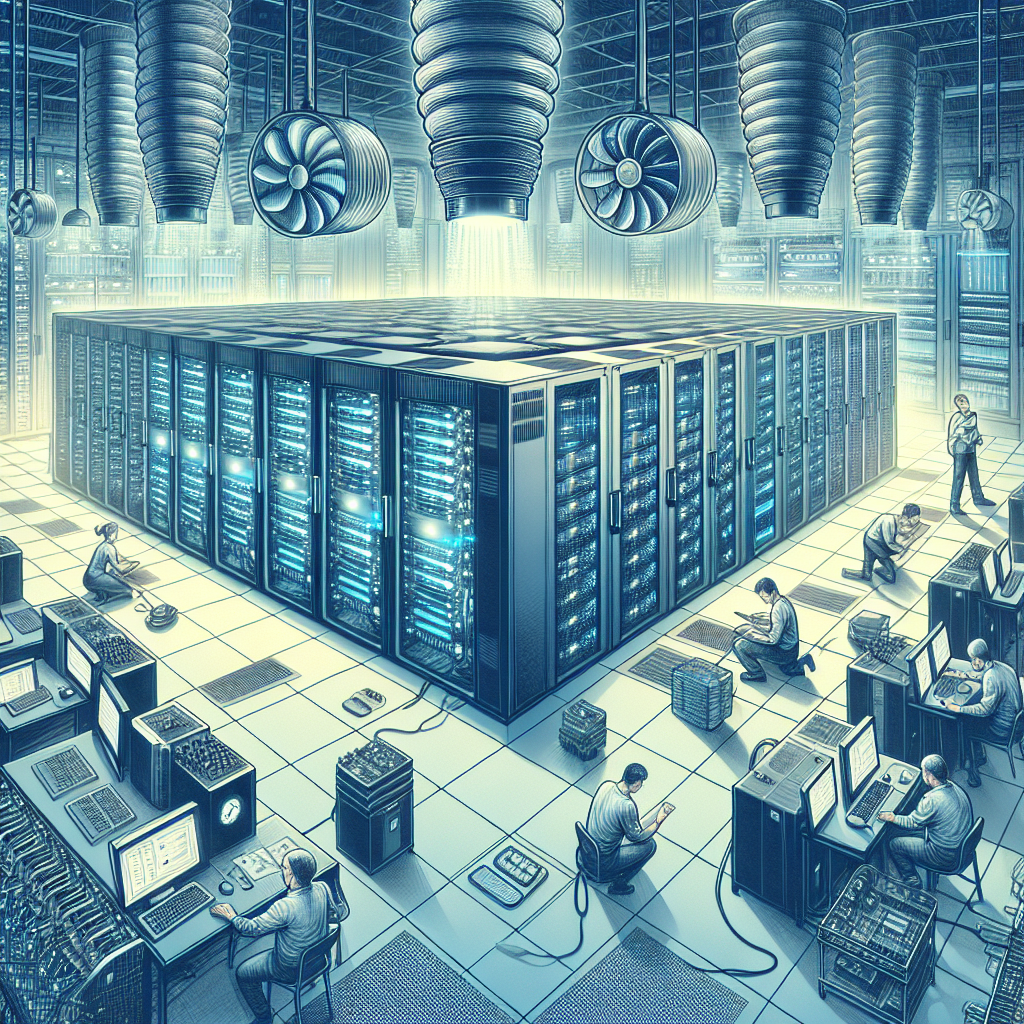Your cart is currently empty!
Tag: Troubleshooting

Mastering Data Center Troubleshooting: Strategies for Success
Data centers are the backbone of modern businesses, housing the servers, storage systems, and networking equipment that support critical applications and services. When issues arise in a data center, it can have a significant impact on business operations, leading to downtime, data loss, and potential financial losses. That’s why mastering data center troubleshooting is essential for IT professionals responsible for maintaining these mission-critical facilities.Here are some strategies for success in data center troubleshooting:
1. Develop a comprehensive understanding of the data center infrastructure: Before you can effectively troubleshoot issues in a data center, you need to have a thorough understanding of the infrastructure. This includes knowing the layout of the data center, the location of critical equipment, and how different systems are interconnected. Having this knowledge will help you quickly identify the root cause of problems and implement appropriate solutions.
2. Implement monitoring and alerting tools: Monitoring tools are essential for detecting issues in real-time and alerting IT staff to potential problems. By leveraging monitoring and alerting tools, you can proactively identify and address issues before they escalate into major outages. These tools can help you track key performance metrics, such as server CPU utilization, storage capacity, and network bandwidth, and set alerts for abnormal behavior.
3. Develop a structured troubleshooting process: A structured troubleshooting process is essential for efficiently resolving issues in a data center. This process should include steps for identifying the problem, gathering relevant information, isolating potential causes, testing solutions, and verifying that the issue has been resolved. By following a systematic approach to troubleshooting, you can avoid wasting time and resources on ineffective solutions.
4. Document everything: Documenting troubleshooting steps, solutions, and outcomes is crucial for building a knowledge base that can be referenced in the future. By keeping detailed records of past issues and their resolutions, you can quickly identify patterns and trends, which can help you prevent similar issues from occurring in the future. Documentation also provides valuable insights for training new staff members and ensuring consistency in troubleshooting processes.
5. Collaborate with team members and vendors: Data center troubleshooting often requires collaboration with other team members, such as network engineers, system administrators, and storage specialists. By working together, you can leverage each other’s expertise and resources to quickly resolve complex issues. Additionally, don’t hesitate to reach out to vendors for support when troubleshooting hardware or software-related problems. Vendors often have specialized knowledge and tools that can help expedite the resolution process.
In conclusion, mastering data center troubleshooting requires a combination of technical expertise, effective communication, and a structured approach to problem-solving. By developing a comprehensive understanding of the data center infrastructure, implementing monitoring and alerting tools, following a structured troubleshooting process, documenting everything, and collaborating with team members and vendors, IT professionals can successfully navigate the challenges of troubleshooting in a data center environment. With these strategies in place, businesses can minimize downtime, maximize uptime, and ensure the reliability of their critical IT infrastructure.

Resolving Data Center Performance Issues: Troubleshooting Tips
Data centers are the backbone of modern businesses, providing the infrastructure necessary to store, manage, and process vast amounts of data. However, like any complex system, data centers can experience performance issues that can disrupt operations and impact the bottom line. Resolving these issues quickly and effectively is crucial to maintaining the efficiency and reliability of the data center.Here are some troubleshooting tips to help resolve data center performance issues:
1. Monitor performance metrics: The first step in resolving data center performance issues is to monitor key performance metrics, such as CPU usage, memory utilization, disk I/O, and network traffic. By regularly monitoring these metrics, you can identify any anomalies or trends that may be causing performance issues.
2. Identify the root cause: Once you have identified a performance issue, it is important to determine the root cause. This may involve conducting a thorough analysis of the data center infrastructure, including servers, storage devices, networking equipment, and software applications. By pinpointing the source of the problem, you can develop a targeted solution to resolve it.
3. Implement performance tuning: Performance tuning involves optimizing the configuration of hardware and software components to improve performance. This may include adjusting server settings, upgrading hardware components, or optimizing software applications. By fine-tuning the data center environment, you can enhance performance and mitigate potential issues.
4. Conduct regular maintenance: Regular maintenance is essential to preventing performance issues in the data center. This may involve performing routine checks on hardware components, updating software applications, and replacing outdated equipment. By proactively maintaining the data center infrastructure, you can minimize the risk of performance issues occurring.
5. Implement redundancy and failover mechanisms: Redundancy and failover mechanisms are critical components of a resilient data center infrastructure. By implementing redundant hardware components, such as servers and storage devices, and failover mechanisms, such as load balancing and clustering, you can ensure uninterrupted operations in the event of a hardware failure or performance issue.
6. Seek expert assistance: In some cases, resolving data center performance issues may require the expertise of IT professionals. If you are unable to identify or resolve a performance issue on your own, it may be beneficial to seek assistance from a qualified IT consultant or service provider. These experts can provide specialized knowledge and experience to help diagnose and resolve complex performance issues.
In conclusion, resolving data center performance issues requires a proactive approach that involves monitoring performance metrics, identifying root causes, implementing performance tuning, conducting regular maintenance, implementing redundancy and failover mechanisms, and seeking expert assistance when needed. By following these troubleshooting tips, you can effectively address performance issues and maintain the efficiency and reliability of your data center.
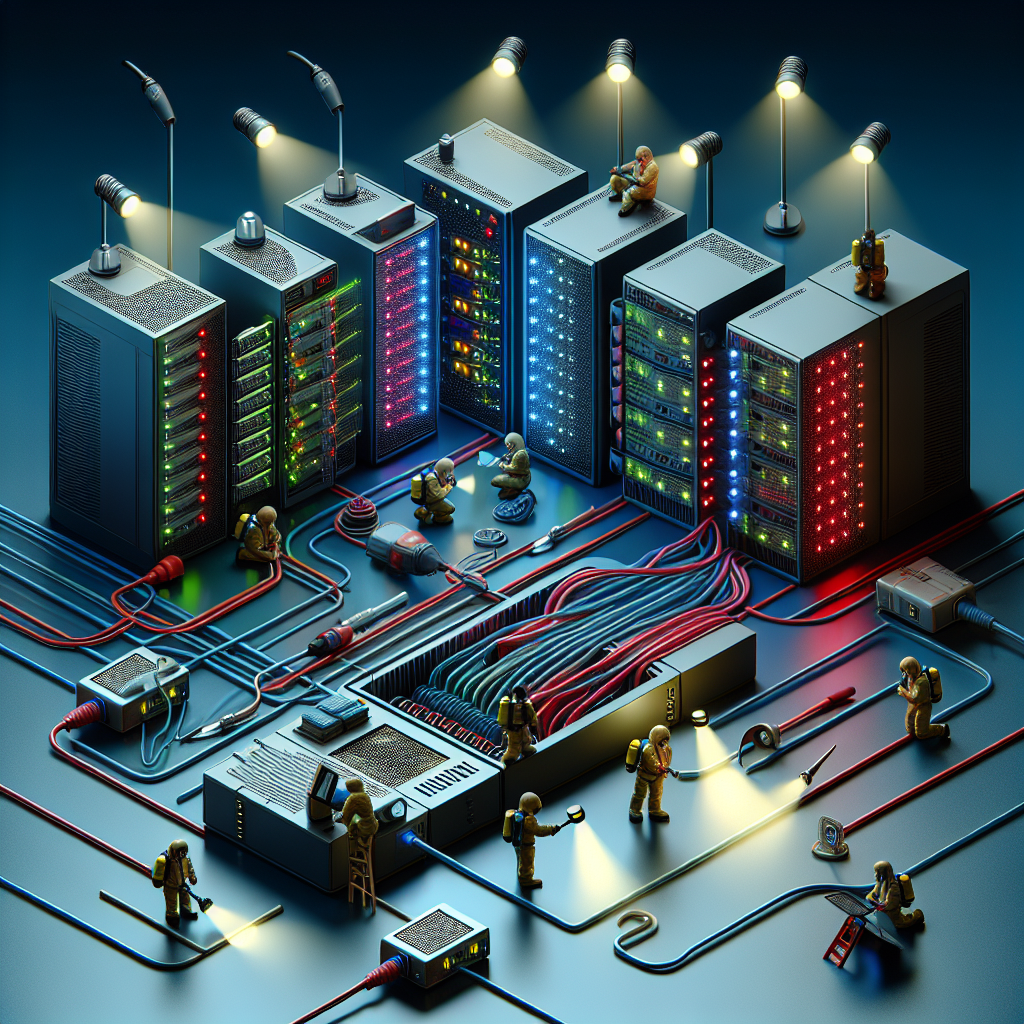
Troubleshooting Data Center Problems: A Deep Dive into Root Cause Analysis
Data centers are the backbone of modern businesses, providing the infrastructure and support for critical applications and services. However, even the most well-designed and maintained data centers can experience problems that can impact performance and reliability. When issues arise, it is important to quickly identify and address the root cause to minimize downtime and ensure optimal performance.Troubleshooting data center problems requires a systematic approach that involves gathering information, analyzing data, and identifying the underlying issues. This process, known as root cause analysis, helps IT professionals pinpoint the exact cause of a problem and develop an effective solution.
One of the first steps in troubleshooting data center problems is to gather as much information as possible about the issue. This may involve reviewing system logs, monitoring performance metrics, and interviewing staff members who may have knowledge of the problem. By collecting data, IT professionals can gain a better understanding of the issue and identify potential causes.
Once the necessary information has been gathered, the next step is to analyze the data and identify the root cause of the problem. This may involve looking for patterns or trends in the data, conducting tests to isolate the issue, and ruling out possible causes. It is important to approach the analysis process methodically and systematically to ensure that all potential causes are considered.
In some cases, the root cause of a data center problem may be obvious, such as a hardware failure or software bug. However, in other cases, the issue may be more complex and require a deeper investigation. This may involve working with vendors, consulting with experts, or conducting additional testing to identify the exact cause of the problem.
Once the root cause of the data center problem has been identified, IT professionals can develop a plan to address the issue and implement a solution. This may involve replacing faulty hardware, updating software, or making configuration changes to prevent the issue from recurring. It is important to document the steps taken to address the problem and communicate any changes to relevant stakeholders.
In conclusion, troubleshooting data center problems requires a systematic approach that involves root cause analysis. By gathering information, analyzing data, and identifying the underlying issues, IT professionals can quickly identify and address problems to minimize downtime and ensure optimal performance. By following best practices and staying proactive, businesses can minimize the impact of data center issues and maintain a reliable and efficient infrastructure.

Top Tips for Effective Data Center Troubleshooting
Data centers are the backbone of any modern business, housing crucial IT infrastructure and storing vast amounts of data. When something goes wrong in a data center, it can have serious consequences for the organization. That’s why effective troubleshooting is essential to ensure that any issues are resolved quickly and efficiently.Here are some top tips for effective data center troubleshooting:
1. Document Everything: Before you even start troubleshooting, make sure you have a detailed understanding of the data center’s layout and configuration. Document all hardware, software, and network connections to help you identify potential points of failure.
2. Monitor Performance: Utilize monitoring tools to keep track of the data center’s performance in real-time. This will help you identify any issues before they escalate into a major problem.
3. Establish Baselines: Establish baseline performance metrics for your data center so that you can quickly identify deviations from normal behavior. This will help you pinpoint the root cause of any issues.
4. Use Diagnostic Tools: Use diagnostic tools to help you identify the cause of a problem. These tools can help you pinpoint hardware or software issues and guide you in the troubleshooting process.
5. Follow Best Practices: Ensure that you follow best practices for troubleshooting, such as isolating the problem, testing solutions in a controlled environment, and documenting your actions. This will help you avoid making mistakes that could exacerbate the issue.
6. Work Closely with Vendors: If you’re unable to resolve the issue on your own, don’t hesitate to reach out to your hardware or software vendors for support. They may have specialized knowledge or tools that can help you troubleshoot more effectively.
7. Implement Change Management: Implement a robust change management process to track any changes made to the data center environment. This will help you identify potential causes of issues and roll back changes if necessary.
8. Continuously Improve: After resolving an issue, take the time to conduct a post-mortem analysis to identify what went wrong and how you can prevent similar issues in the future. Continuous improvement is key to effective troubleshooting.
By following these top tips for effective data center troubleshooting, you can ensure that your organization’s IT infrastructure remains reliable and resilient. Remember to document everything, monitor performance, establish baselines, use diagnostic tools, follow best practices, work closely with vendors, implement change management, and continuously improve your troubleshooting processes.
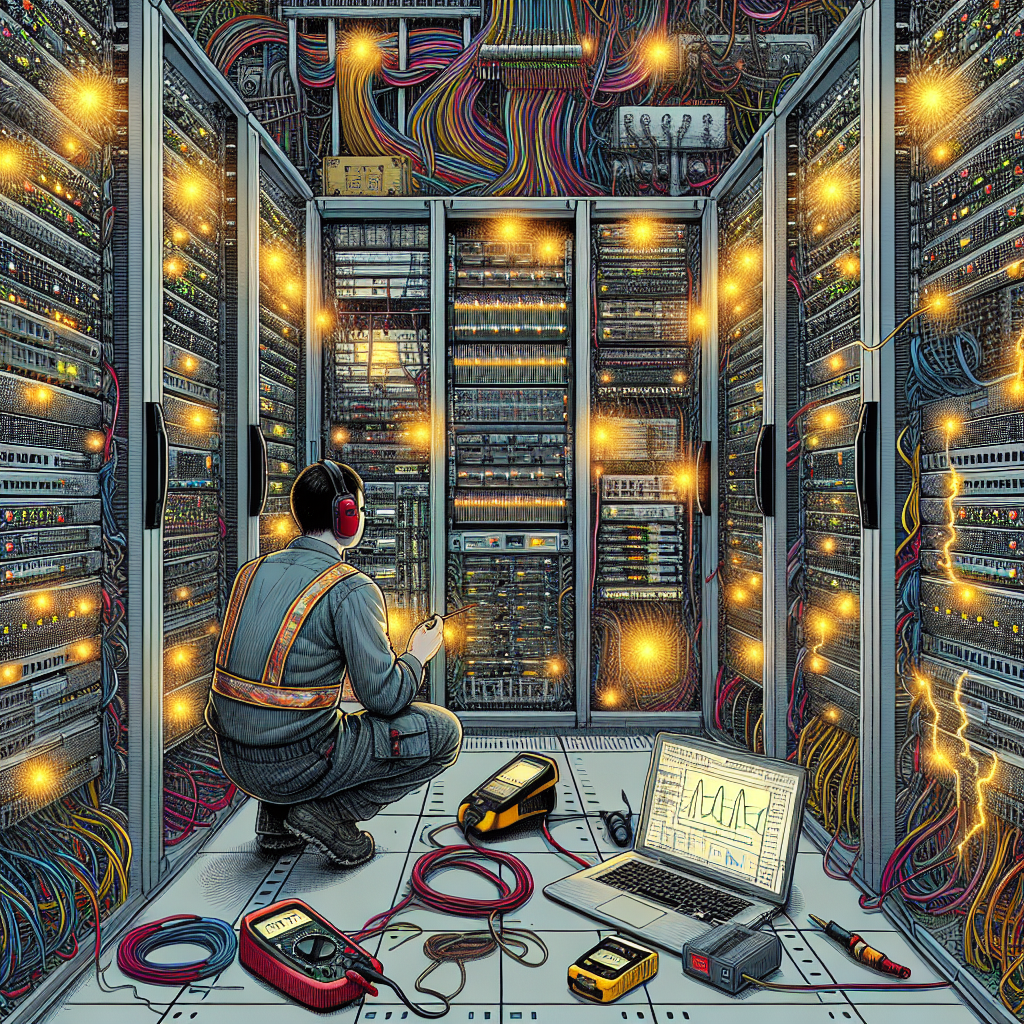
Troubleshooting Tips for Data Center Problems
Data centers are the backbone of any organization’s IT infrastructure, housing critical hardware and software that keep businesses running smoothly. However, like any complex system, data centers can experience problems that disrupt operations and cause downtime. In this article, we will discuss some common data center problems and provide troubleshooting tips to help you quickly resolve them.1. Overheating: One of the most common issues in data centers is overheating, which can lead to hardware failure and data loss. To troubleshoot this problem, check the temperature in the data center and ensure that the cooling systems are functioning properly. Make sure that air vents are not blocked and that the airflow is adequate to dissipate heat. Consider installing additional cooling units or rearranging equipment to improve ventilation.
2. Power Outages: Power outages can be a major concern for data centers, as they can lead to data corruption and system crashes. To troubleshoot this issue, check the power source and make sure that all connections are secure. Consider installing uninterruptible power supply (UPS) units to provide backup power in case of outages. Regularly test the UPS units to ensure they are functioning properly.
3. Network Congestion: Slow network speeds and connectivity issues can disrupt operations in a data center. Troubleshoot this problem by checking network cables and connections for any damage or loose connections. Consider upgrading network equipment or implementing load balancing techniques to distribute traffic evenly across servers. Monitor network performance regularly to identify any bottlenecks and address them promptly.
4. Hardware Failures: Hardware failures are a common occurrence in data centers, and can result in data loss and system downtime. To troubleshoot this issue, conduct regular maintenance checks on hardware components such as servers, storage devices, and network switches. Monitor hardware performance and look out for warning signs such as unusual noises or error messages. Have spare parts on hand to quickly replace any faulty hardware.
5. Security Breaches: Data centers are prime targets for cyber attacks, as they house sensitive information and valuable assets. To troubleshoot security breaches, implement robust security measures such as firewalls, encryption, and access controls. Regularly update software and firmware to patch known vulnerabilities. Conduct regular security audits and penetration tests to identify and mitigate potential risks.
In conclusion, data center problems can be disruptive and costly if not addressed promptly. By following these troubleshooting tips and implementing proactive measures, you can minimize the risk of downtime and ensure the smooth operation of your data center. Remember to regularly monitor and maintain your data center infrastructure to prevent problems before they occur.

Streamlining Data Center Troubleshooting with Automation and Remote Monitoring
In today’s fast-paced and technology-driven world, data centers play a crucial role in storing, processing, and managing vast amounts of data. As the demand for data center services continues to grow, so does the need for efficient troubleshooting and monitoring solutions. Traditional methods of troubleshooting data center issues can be time-consuming and labor-intensive, often requiring IT professionals to physically be present at the data center to diagnose and resolve problems. However, with the advancements in automation and remote monitoring technology, data center troubleshooting has become more streamlined and efficient than ever before.Automation tools have revolutionized the way data center operations are managed. By automating routine tasks such as monitoring system performance, analyzing logs, and identifying potential issues, IT professionals can save time and resources, allowing them to focus on more strategic initiatives. Automation can also help reduce human error, as tasks are performed consistently and accurately every time.
Remote monitoring solutions have also played a significant role in streamlining data center troubleshooting. With remote monitoring tools, IT professionals can access real-time data and performance metrics from anywhere, allowing them to quickly identify and resolve issues before they escalate. Remote monitoring solutions can provide insights into the health of servers, storage systems, and networking equipment, helping IT teams proactively address potential problems.
One of the key benefits of automation and remote monitoring in data center troubleshooting is the ability to minimize downtime. By quickly identifying and resolving issues, IT professionals can ensure that data center services remain operational and available to users. This not only helps maintain business continuity but also enhances the overall customer experience.
In addition to reducing downtime, automation and remote monitoring can also help improve the overall efficiency of data center operations. By automating routine tasks and proactively monitoring performance, IT teams can optimize resource allocation, improve system uptime, and enhance overall productivity.
As data centers continue to evolve and grow in complexity, the need for efficient troubleshooting and monitoring solutions becomes increasingly critical. Automation and remote monitoring tools offer a streamlined and effective approach to managing data center operations, helping IT professionals diagnose and resolve issues quickly and efficiently. By leveraging these technologies, organizations can ensure that their data centers remain reliable, secure, and high-performing in today’s digital age.
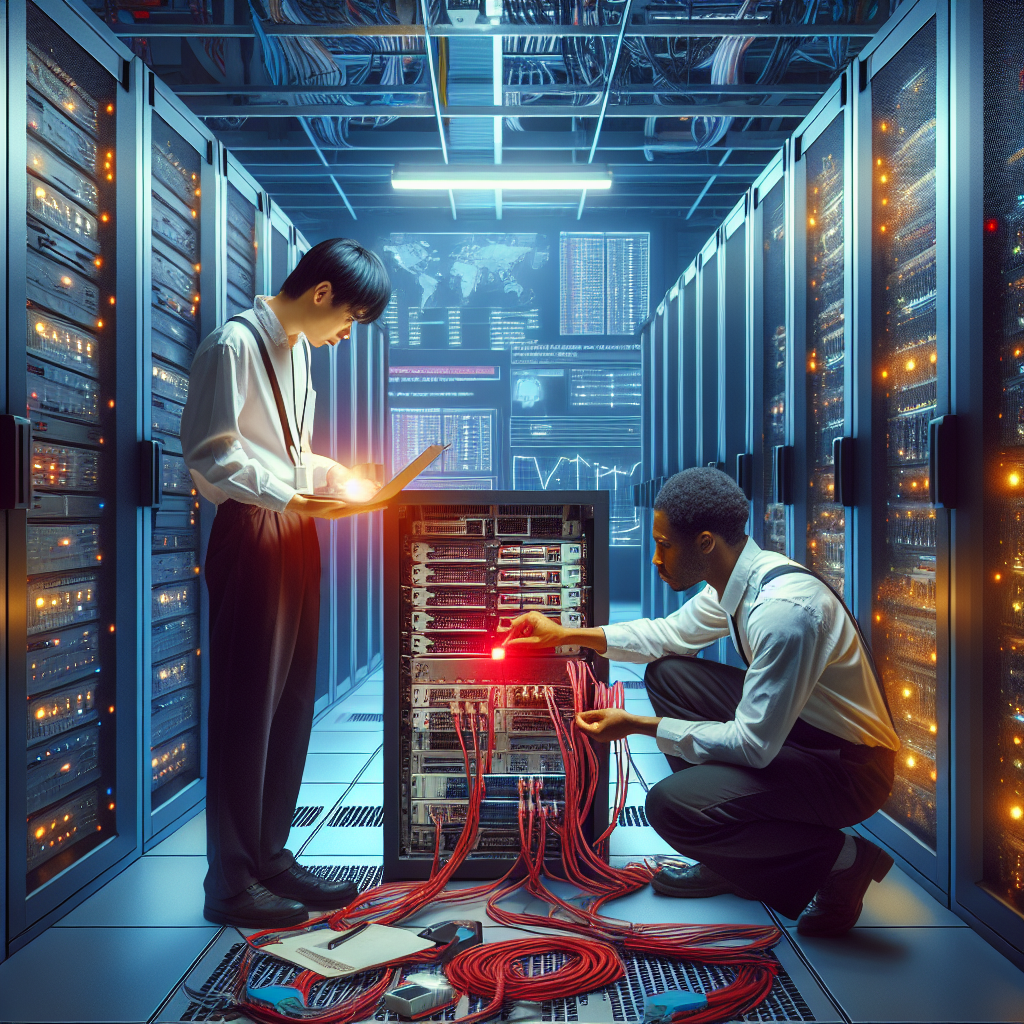
Troubleshooting Hardware Failures in the Data Center
Data centers are essential for storing and processing large amounts of information for businesses and organizations. However, hardware failures can occur unexpectedly, causing downtime and potential data loss. In this article, we will discuss common hardware failures in data centers and how to troubleshoot them effectively.One of the most common hardware failures in data centers is a hard drive failure. This can occur due to physical damage, manufacturing defects, or wear and tear over time. Symptoms of a failing hard drive include slow performance, data corruption, and strange noises coming from the drive.
To troubleshoot a hard drive failure, first, check the drive’s health using diagnostic tools provided by the manufacturer. If the drive is still under warranty, contact the manufacturer for a replacement. If not, you will need to replace the drive and restore data from backups.
Another common hardware failure in data centers is a power supply failure. Symptoms of a failing power supply include random reboots, system crashes, and a burning smell coming from the server. To troubleshoot a power supply failure, check that the power supply is properly connected and that the power outlet is functioning correctly. If the power supply is faulty, replace it with a new one.
Networking hardware failures are also common in data centers, causing network outages and connectivity issues. Symptoms of a networking hardware failure include slow internet speeds, dropped connections, and error messages when trying to access the network.
To troubleshoot a networking hardware failure, check the physical connections between devices, ensure that the network cables are properly connected, and restart the networking equipment. If the issue persists, check the network configuration and update the firmware on networking devices.
In addition to these common hardware failures, data centers may also experience failures in cooling systems, memory modules, and other components. To prevent hardware failures in the data center, it is important to regularly maintain and monitor all hardware components, perform routine checks, and keep backups of critical data.
In conclusion, hardware failures in the data center can have serious consequences for businesses and organizations. By understanding common hardware failures and how to troubleshoot them effectively, data center administrators can minimize downtime and ensure the smooth operation of their data centers. Remember to regularly maintain and monitor hardware components to prevent failures and keep backups of critical data to mitigate data loss in the event of a hardware failure.

Troubleshooting Data Center Network Issues: A Comprehensive Guide
Data centers are the backbone of modern businesses, housing the servers and networking equipment that keep operations running smoothly. However, when network issues arise, they can have a significant impact on productivity and revenue. Troubleshooting data center network issues requires a systematic approach to identify and resolve the root cause of the problem.In this comprehensive guide, we will outline the steps you can take to troubleshoot data center network issues effectively and minimize downtime.
1. Identify the Symptoms: The first step in troubleshooting network issues is to identify the symptoms. This may include slow network speeds, dropped connections, or intermittent outages. Documenting the nature and frequency of the issues can help you pinpoint the source of the problem.
2. Check Physical Connections: One of the most common causes of network issues is faulty or loose physical connections. Check all cables, switches, and routers to ensure they are securely connected and in good condition.
3. Monitor Network Traffic: Use network monitoring tools to track traffic patterns and identify any spikes or anomalies that could be causing performance issues. This data can help you narrow down the source of the problem and prioritize troubleshooting efforts.
4. Test Network Devices: Test each network device, such as switches, routers, and firewalls, to ensure they are functioning properly. Run diagnostic tests to identify any configuration errors or hardware failures that may be causing network issues.
5. Verify Network Configuration: Review the network configuration settings to ensure they are correctly configured for optimal performance. Make sure IP addresses, subnets, and VLANs are set up correctly and that there are no conflicts or misconfigurations.
6. Update Firmware and Software: Outdated firmware and software can lead to compatibility issues and security vulnerabilities. Make sure all network devices are running the latest updates and patches to prevent potential network issues.
7. Check for Network Congestion: Network congestion can occur during peak usage times, causing slowdowns and dropped connections. Use traffic shaping techniques or implement Quality of Service (QoS) policies to prioritize critical traffic and alleviate congestion.
8. Monitor Security Threats: Cybersecurity threats can disrupt network operations and compromise sensitive data. Implement security measures such as firewalls, intrusion detection systems, and encryption to protect against malicious attacks.
9. Document and Analyze Network Changes: Keep track of any network changes or updates that have been made recently. Changes to network configurations or hardware can inadvertently introduce issues that need to be addressed.
10. Seek Professional Help: If you are unable to resolve network issues on your own, consider seeking help from a professional network engineer or IT consultant. They can provide expertise and guidance to diagnose and resolve complex network problems.
In conclusion, troubleshooting data center network issues requires a methodical approach to identify and resolve the root cause of the problem. By following the steps outlined in this comprehensive guide, you can effectively troubleshoot network issues and minimize downtime to keep your business running smoothly.
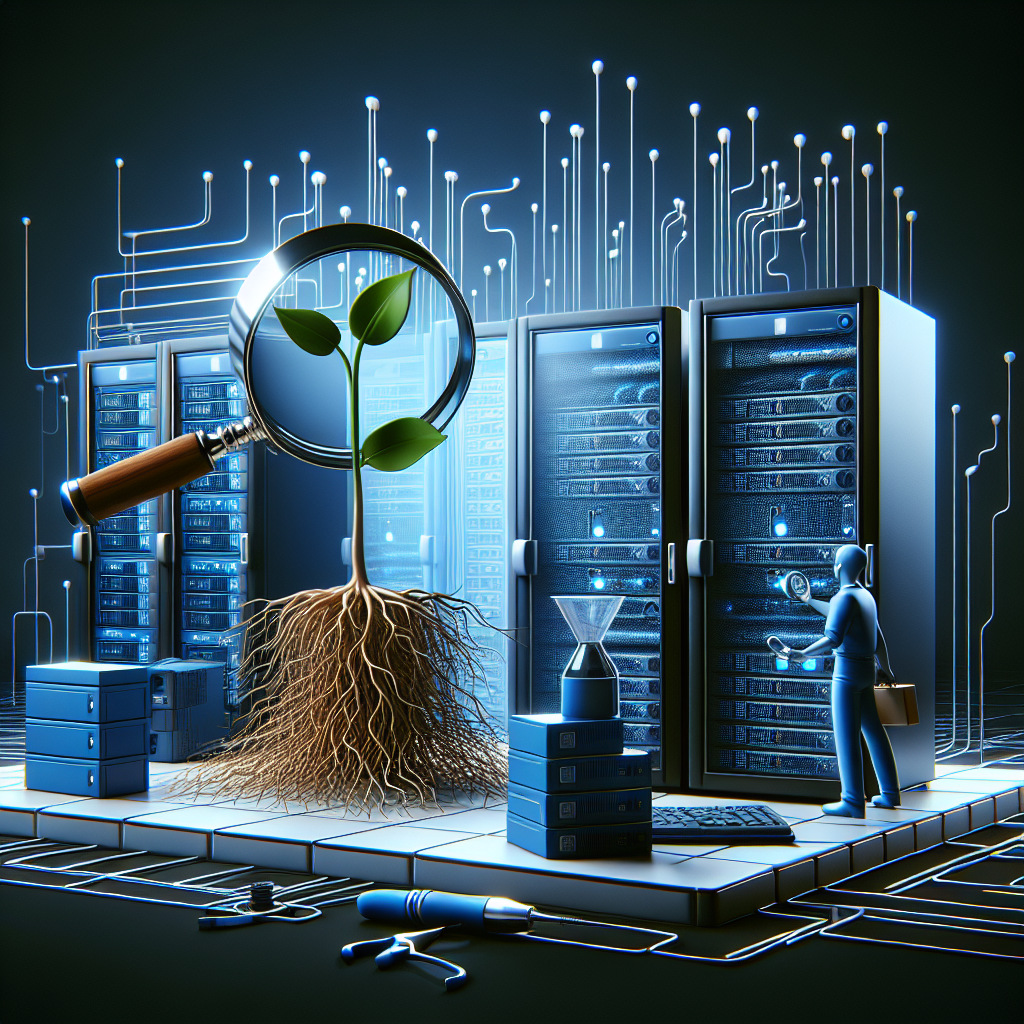
The Importance of Root Cause Analysis in Data Center Troubleshooting
In the fast-paced world of data centers, downtime can be a costly and disruptive problem. When issues arise, it is crucial to quickly identify and address the root cause in order to prevent future occurrences. This is where root cause analysis (RCA) comes into play.RCA is a systematic process used to identify the underlying cause of a problem or issue. It involves investigating the symptoms, understanding the contributing factors, and determining the root cause in order to implement effective solutions. In the context of data center troubleshooting, RCA is essential for maintaining optimal performance and reliability.
One of the key benefits of RCA in data center troubleshooting is that it helps to prevent recurring issues. By identifying the root cause of a problem, data center operators can implement targeted solutions that address the underlying issue, rather than just treating the symptoms. This not only helps to resolve the immediate problem at hand, but also prevents similar issues from arising in the future.
Additionally, RCA can help data center operators optimize their infrastructure and processes. By identifying and addressing root causes, operators can identify areas for improvement and implement changes to prevent future issues. This can lead to increased efficiency, reduced downtime, and improved overall performance.
Furthermore, RCA can help data center operators make informed decisions about resource allocation and technology investments. By understanding the root cause of issues, operators can prioritize their efforts and investments in areas that will have the greatest impact on performance and reliability.
In conclusion, root cause analysis is a critical tool in data center troubleshooting. By identifying the underlying causes of issues and implementing targeted solutions, data center operators can prevent recurring problems, optimize their infrastructure, and make informed decisions about resource allocation. By incorporating RCA into their troubleshooting processes, data center operators can ensure that their operations run smoothly and efficiently, minimizing downtime and maximizing performance.
